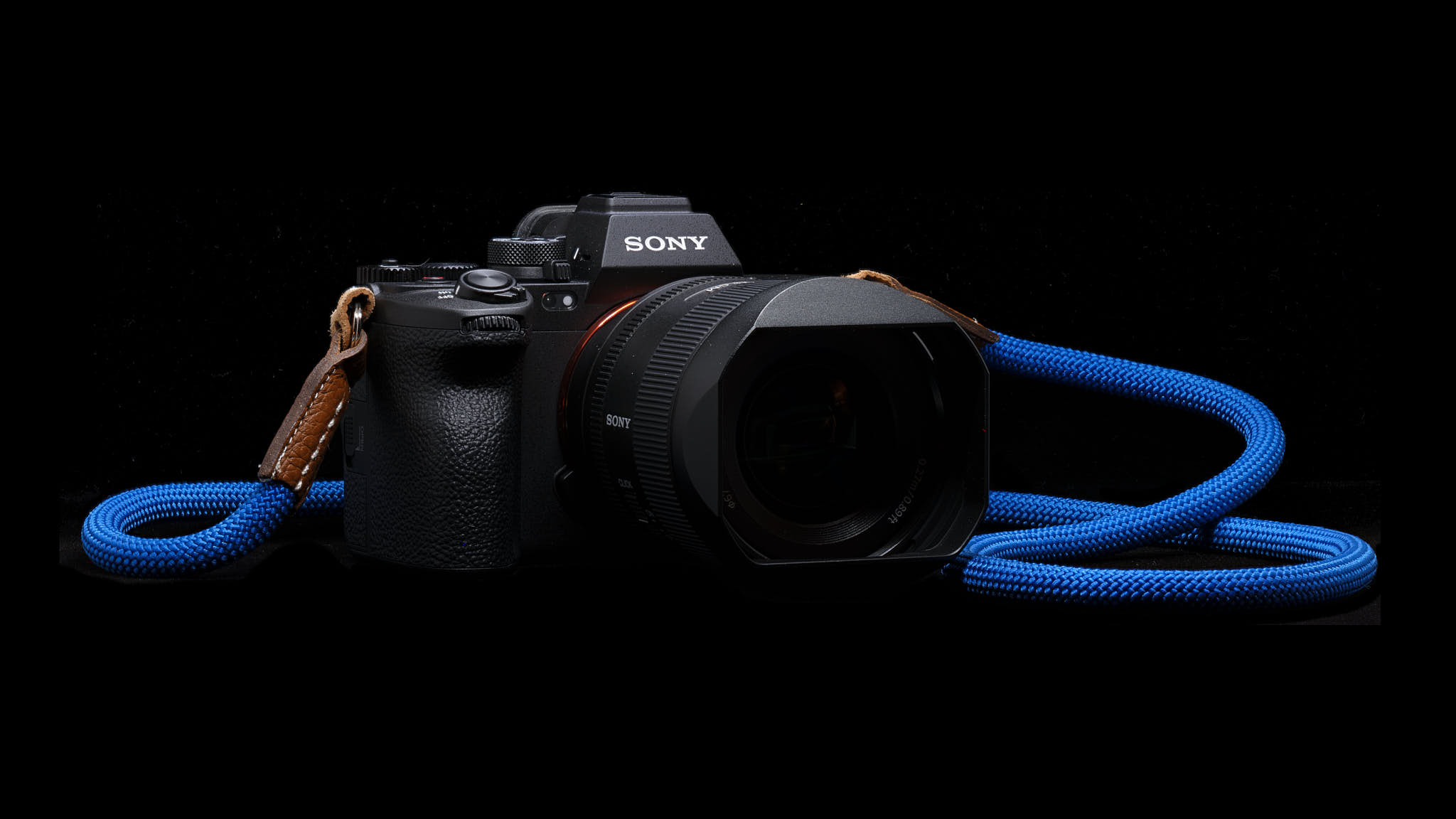
In my Fujifilm X-T5 review, I noted that I was reaching the limit of my patience with Fujifilm in regards to their autofocus performance. Unfortunately, a recent episode pushed me beyond my limit and I decided to sell the X-T5 and X100V and replace them with a Sony A7R5. I hate having to make this change, but I need at least one camera that can focus reliably.
Fujifans reading this will immediately brand me as a Sony shill and Fuji hater, but I want them to know that I love Fujifilm. I’ve had an X-T10, X-Pro1, X-Pro2, X-T2, X-T3, X-T4, GFX50R, X100V and X-T5; I still have the GFX100S and X-Pro2. All of these cameras (and the lenses that go with them) were bought and paid for; I didn’t even get a volume discount.
Background
I have a number of cameras that are targeted for specific tasks with minimal overlap. The GFX100S is for landscape and high resolution requirements. The X-T5 was for casual use and moving subjects, the X100V was for discrete shooting circumstances, and the Leica M11 is for pure pleasure with its rangefinder experience.
Over a recent weekend, I had a once-in-a-lifetime trip for my birthday to Weihai in Shandong Province, China. My friends had arranged a number of surprise activities to help celebrate my special day. This included a beachfront fireworks show! During the weekend, I took hundreds of images of my friends with the X-T5 and 90% of them were perfectly focused.
The problem however was that when I handed my camera to my friends to capture some memories, the images came out <50% in focus. When I’m behind the camera, I can work around the X-T5’s quirks, but when given to another photographer, the hit rate goes down very quickly.
At first, I put this down to simple user error. I know that the X-T5 needs about a half second for the autofocus to settle in continuous mode (AFC) and also requires the camera be held steady when the target is moving. However, two annoying things happened on this trip that pushed me over the edge to the point I decided to move on from this camera.
1. Autofocus Consistency
The first annoying thing is that my X-T5 is not consistent with autofocus. The recent firmware was supposed to improve this, but it appears that Fujifilm is now leaning more heavily on contrast detection in the newer firmware within their hybrid system rather than phase detection. This manifests itself by a back-and-forth pulsing that occurs in more situations than it should.
Even with the fixes Fujifilm has put into place, there are still several occurrences where the camera shows a green tracking box on an eye, but the images come out defocused. What makes it so frustrating is that it’s inconsistent. Sometimes it works brilliantly and it feels like a modern camera, while other times it completely fails.
I also had a bizarre situation occur with the XF33 F1.4 WR lens. In relatively bright conditions and with a high contrast target, the lens would rack back and forth on focus and would ultimately show a red focus box. Switching the camera to manual focus, I was able to get the target perfectly focused.
I was intrigued enough that I thought I’d try turning the camera off and on again to see what happened. With the camera rebooted, the focus worked as expected. I didn’t move, the lighting conditions didn’t change, the camera settings didn’t change, but somehow rebooting the camera fixed the issue.
If you want to see an example of focusing inconsistency for yourself, you can attach a wide-angle lens to the X-T5, turn on the distance display and then focus at a known distance. You’ll see the camera identify the distance as anything from a few meters away to infinity. While it may appear to be a distance estimation error, if you actually look at the images and compare them, you will indeed find a difference in the sharpness at the focus point; I’ve never seen this kind of behaviour in my GFX cameras.
[Update as of September 21, 2023: Fujifilm have released firmware version 2.03 which resolves the wide-angle lens issue noted above. However, the false positives issue remains]
I can live with all of the above, but what really irked me was what happened when the same friends who were achieving <50% hit rate on my X-T5 took control of my friend’s Nikon Z6II; they were able to achieve >90% hit rates. With no change to their technique, they were able to intuitively achieve a very high hit rate. This is how a modern camera should operate in 2023.
I’m all for having to learn the ins and outs of cameras; it’s actually fun to overcome those challenges, which is why I have the GFX100S and M11, but I need one camera that I can hand to a friend and trust that they’ll be able to capture some sharp images. I can’t tell you how many vacations I’ve been on where I only have a handful of images of myself in the frame because my cameras are difficult for an inexperienced (and sometimes experienced) photographer to use.
2. Firmware Follies
Kaizen was a compelling attribute of Fujifilm cameras with that implicit agreement that Fujifilm would keep updating the cameras and oftentimes deliver updates so significant that it felt like a new camera (anyone remember the amazing X-Pro2 or GFX50R updates?!).
Recently, as the cameras have matured, the firmware updates have become fewer and further between. Those that have come have been buggy and poorly tested. The recent GFX100S 2.0 firmware is an example. The firmware broke the exposure compensation button and would randomly dim the EVF. How can Fujifilm allow these kinds of obvious bugs to be released for a professional camera like the GFX?
The Internet had to find a workaround for 100S users. Version 2.01 fixed the two issues but my camera started to lock up while using the GF20-35 (something it never did before). I lost several images over that weekend due to the random lockups; the only fix being to remove the battery, with the last image taken being lost. Fujifilm just released Version 2.02 which claims to fix the GF20-35 lockup issue, but it’s too late for the images I took on that weekend.
The X-T5’s recent firmware updates have also been a bit clumsy. Basic testing doesn’t appear to have been done on the new firmware, such that people who were using slow SD cards would receive a “Write Error” on their camera. There’s also the longstanding issue of Fujifilm limiting directories to 999 files, whereas other cameras can store thousands.
Why the Sony A7R5?
It doesn’t make sense to have cameras with major overlap, so I wanted to find something that matched the X-T5’s brief as closely as possible. It should be a small and light camera that can fit into a messenger bag and with excellent image quality. Most importantly, it should have intuitive autofocus that anybody can use, and should have the ability to use small and light prime lenses.
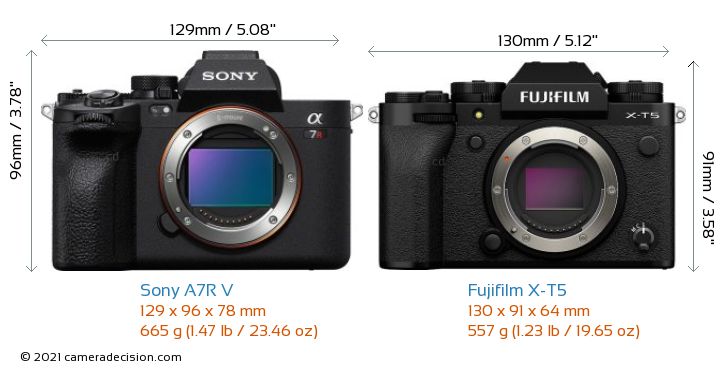

The Nikon Z8 was my first choice, however when doing a size and weight comparison, I was surprised to find that it overlaps almost 1:1 with the GFX100S (it’s amazing that Fujifilm was able to fit all that into the 100S size package back in 2021). I also thought about Canon and Panasonic, but I don’t like the lens choices for Canon with their closed ecosystem and Panasonic has just recently demonstrated their autofocus prowess.
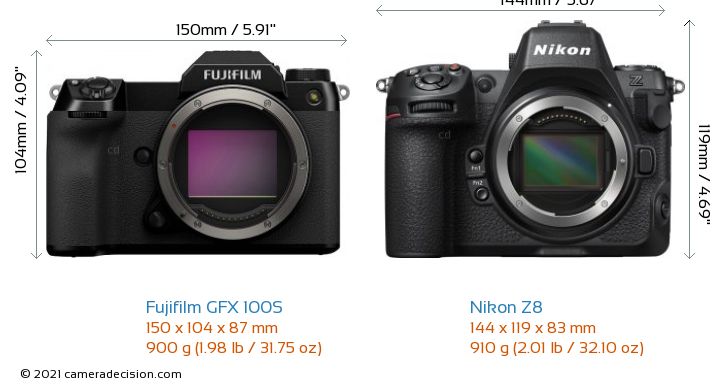
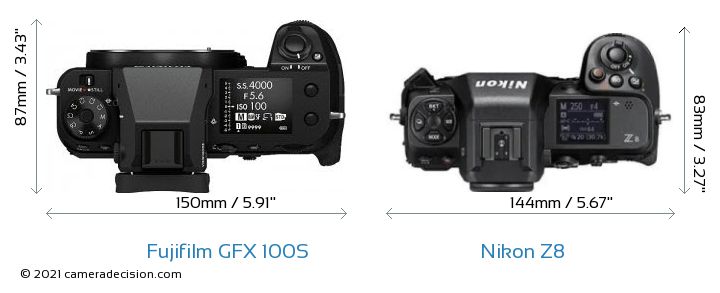
As is often the case in digital mirrorless cameras, most roads lead to Sony. When looking at it from a size, weight and autofocus perspective, the choice became obvious. The misgivings I’ve had with Sony over the years have been systemically eliminated:
- The awful menus. The menus have been reorganized, and while it’s still nowhere near as intuitive as a Leica, it does allow a tremendous amount of flexibility for professional users. I’m going to try my best to use it as close to factory settings as possible so that I don’t have to dive into the menus.
- Lack of manual controls. The latest Sony GM lenses and those from third parties now have aperture rings; it’s no longer exclusive to Fujifilm. Since Fujifilm taught me how to give up the shutter speed and exposure compensation dials (100S), it made it easier to adapt.
- Huge and heavy lenses. When I looked at the Sony system a few years ago, all the lenses were huge and heavy. However, in 2023, lens technology has evolved, the use of software distortion correction has become more accepted given the extra MP we have on tap, and with more exotic materials, we have some incredible optics that are small, light and with super fast focus mechanisms.
- Battery life. With the introduction of the NP-FZ100 battery, Sony clobbered its poor battery life into the history books. To their credit, Fujifilm made similar strides with their NP-W235 battery.
- Build quality. The buttons on the Sony A7R3 generation were mushy and the doors felt flimsy. I could never use and own that camera. However, starting with the A7R4 generation, Sony really upped their game on the feel of their dials, buttons and doors. It now feels like a premium camera with a robust build quality.
I still don’t like the looks of the Sony cameras; the X-T5 remains one of the most beautiful cameras ever created, but how the camera looks does me no good if the images coming from it are out of focus.
Can it Replicate the Fujifilm X System?
To replace the X system, I’ve picked up the Sony 35MM F1.4 GM (to match the XF23 F1.4 WR), Sony 50MM F1.4 GM (to match the XF33 F1.4 WR) and Sigma 85MM F1.4 (to match the XF56 F1.2 WR). To be fair, the Sony setup will actually exceed the capability of the X system (in terms of depth of field) because of the sensor size, however the size and weight differences aren’t as big as I expected.
To match the Fujifilm “Fujicrons” 23 F2 and 35F2 lenses, I’ve ordered the Sigma Contemporary i-Series 35MM F2 and 50MM F2 lenses. They have an uncanny similarity to Leica and Fujifilm lenses with their all-metal construction, beautiful design, aperture rings, and small proportions. I’ll see if their image quality can stand up to the scrutiny of the 61MP sensor in the A7R5.
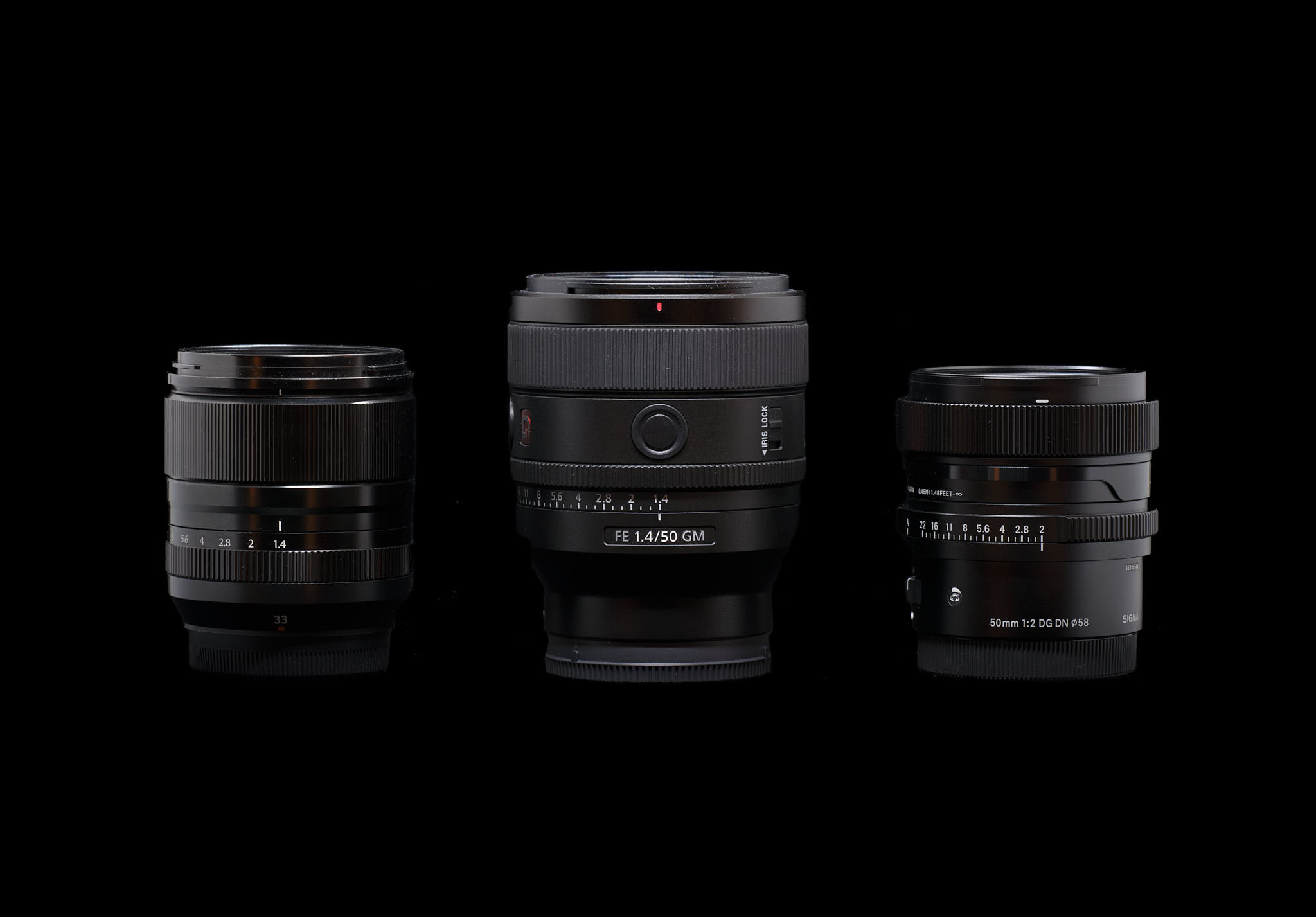
The Sony GM 24-70 F2.8 v2 is a compelling lens and I’m very tempted, but I don’t want to overlap with the GFX system, where I already have the GF32-64 and GF45-100. Those Fujifilm zoom lenses are incredible and I’d like to continue to use them for the times when a zoom lens is ideal.
Conclusion
I’ve been on the Fujifilm X train since 2016 and I’ve loved every minute of it, however for my needs, it was time for a change. It’s way too early to know if this move makes sense, but I’ll be sure to let you know how things go, for better or for worse. I’m keenly aware at the number of “Sold my Sony and came back to Fujifilm” posts I see on DPReview; I could perhaps end up being one of them.
I was able to trade the X100V in for the same price I paid for it three years ago. If I were in the USA or Europe, I could have sold it for even more, however the market in Hong Kong is not as crazy. I’m holding on to the X-T5 for now so that I can do some side-by-side comparisons with the A7R5, but it will be sold in the near future. I’ll be sure to post my first impressions as a Sony A7R5 owner in the near future.
Discover more from fcracer - Travel & Photography
Subscribe to get the latest posts sent to your email.
This is very similar to my experience and I moved to Sony for the autofocus issues too! I wrote up my whole experience and picked up similar lenses to you too, interesting how similar our stories are: https://medium.com/@anthonystonehouse/switching-from-fujifilm-to-sony-a-journey-to-full-frame-mirrorless-6799ef10ac82
Anthony, that’s a very well written article and you’re right that our journeys are mirroring each other! I love the images you used in the review. Anyone thinking of making the switch should take the time to read your review. I really like the comparisons you did too; that’s a lot of work there!
I returned an entire X-T5 kit with prime lenses because of the “false positive” focusing errors – it consistently green-boxed eyes and faces, but they were virtually never actually in focus on the saved image. I loved absolutely everything else about it, but could not deal with the focusing errors.
Hi Graham, it’s a disappointing that Fujifilm hasn’t produced a totally reliable autofocus solution yet. However, I should note that they did release a firmware to fix one of the two issues noted above; they’ve now fixed the wide angle lens miss-focus issue. The new firmware is Version 2.03 and can be found on the Fujifilm.com site.
Nice! On the other hand, I’ve had an X-T5 on rental again this weekend and can confirm that the human subject focus still does not work.
I am also having the same problem but with the Fujifilm X-H2S. I have had new components fitted to the camera and it has just gone back to Fuji for a second time. If I shoot a burst of say, 5 images, at 15fps in AF-C, photographing football, the first image could be in focus and the remaining ones are out of focus.
There seems to be a lack of urgency from Fuji in sorting this issue out so I, like the OP, am seriously thinking of going to Sony. I have used Fujjifilm for the last 7 years and have a lot of their equipment so it’s very much a last resort but losing shots at critical times is not something with which I can manage any longer.
Here’s another YouTube video confirming the issue
https://www.youtube.com/watch?v=v17yNkLqtMQ
Hi Nigel, thanks for sharing the link. I’ve been using the Sony for a few weeks now and I’m still astonished at how good the autofocus is. There will be a set of pictures I’ll put online when work isn’t so busy (been working evenings and weekends lately) where I just pointed the camera at a moving scooter at close distance and somehow the Sony just grabbed focus instantly. It’s really remarkable.
Here is the most compelling video I’ve seen to support the Fuji inconsistency issues. I am very near the stage where I jump ship as well.
https://www.youtube.com/watch?v=v17yNkLqtMQ
I absolutely love my Fuji gear but the fact that I fire a burst of images at 15fps and the first one is in focus and the other 4 or 5 are way off – I just can’t live with.
I have been using Fujifilm gear for about five years and have built up a big inventory of their camera bodies and lenses: X-T20, X-T3 (2), X100V, and X-H2S. I also have almost every X series lens. Last year I picked up a GFX 50S II, along with a couple of lenses, and have been learning that system. I am frustrated enough with the X series auto-focus issues to sell it all and move to GFX along with either a Sony A7R5 or a Leica Q3. Fujifilm X series has a lot of interesting features and functions, but I need creative tools that work consistently.
It’s disappointing to hear about yet another person that is moving away from Fuji X because of the autofocus issues. I wish that Fujifilm is able to quickly overcome this issue and catch up to the competition. Their marketing overhypes the improvements in AF from generation to generation which doesn’t help when the expectations are so high and the reality doesn’t deliver.
Now that I’ve been using the A7R5 for a few weeks, the concerning thing is that it makes me contemplate if the GFX is worth keeping… Thus far, I’m resisting because the GFX provides three advantages that the Sony cannot match:
1. 102MP
2. 4×3 format
3. GF lenses are consistently excellent
I’m heading to Bangkok this weekend and have packed both the Sony and GFX. We’ll see which one gets the most action. I really hope it’s the GFX!
I am interested to learn about your experience with the new camera equipment. I ordered a Sony A7RV, along with a couple of Sony prime lenses, to evaluate against my Fujifilm kit. I expect to use the Sony camera equipmen this weekend. Much of what I do is street photography, and sometimes head shots, so I’m anxious to try both the Sony 35mm F1.4 GM and the Sony 50MM F1.2 GM.
Hi Steve, the website is still having some issues showing the replies to this post in all regions. Hopefully you’re able to see this. Congratulations on getting the Sony. I will try to summarize some settings for you to try so that it replicates the Fujifilm experience. I would suggest not doing too much customization as the Sony can get complicated very fast and doesn’t really need any customization to get the best out of it. For example, I’ve left almost all AF settings at default and it “just works”. The 35MM GM is a phenomenal lens. My partner had the 50MM F1.2 and replaced it with the much smaller 50MM F1.4. I have the F1.4 and my testing is showing it to be stellar too. Let me know how your first days work out.
I have both the Fuji GFX 100s and the Nikon Z8. While they are close in size, what many people don’t know, Nikon works in the opposite direction from other cameras. For example, between the Nikon and the Fuji; the lenses mount in the opposite direction, the lens release in a different position and even the on/off switch works in opposite directions. I can play havoc with muscle memory. Still, I wouldn’t stop using either one.
Hi Robert, thanks for sharing your insight on the differences between the Z8 and GFX100S. I wonder what Nikon was thinking when they designed that! It’s so unintuitive to put something on counter-clockwise. I assume there must have been a technical reason for it from the film days that has carried over due to familiarity of its user base. The Sony in comparison operates much in the same way as the GFX100S. I’ve been going back and forth between cameras without much trouble; the only thing I do notice when I switch cameras is how slow the interface on the GFX100S is. I hope the upcoming GFX model will focus on speed and autofocus performance rather than more resolution.
Please let us know how the Sigma Contemporary i-Series lenses work out for you (with beautiful examples of course.)
As someone who has changed cameras a few times and regretted it, you are wise to think about those “Sold my Sony and came back to Fujifilm” posts on DPReview. I’d pause on selling until you are sure you don’t love it anymore. Of course I am speaking to myself when I write this. 🙂
Hi John, once I get some time with the A7R5 and Sigma lenses, I’ll be sure to let you know. I received the 50MM F2 lens already (which is the one I used in the image in this post) and the construction seems to be on par with Fujifilm and a step up on the hybrid-plastic Sony lenses. They look like something Leica would sell! I haven’t yet had the chance to test image quality, but will take the camera and lens to Hong Kong this weekend and give it a test run. While I haven’t verified anything at this point, I anticipate some digital trickery will be at play, given the small and light packaging, full frame sensor coverage and wide aperture.
from your explanation I am sure you should have sent in the T5 for Service and repair. I haven’t heard of anyone owning an xh2 or xh2s complaining about their AF, and I personally own both (but not the T5)and have no complaints whatsoever
Hi Christian, thank you for writing in. I can’t explicitly rule out that a hardware fault is at play, however when I was trying to find a solution to my issues, I came across a number of people on the Internet facing the same problems. The AF issues on my X-T5 can be broken into two categories:
1. False Positives. The green box will show during AF-Continuous mode and appear to be in focus, however several frames will actually turn out to be out of focus. While I can somewhat understand this occurring with slow focusing lenses such as the XF56 F1.2 WR, it should not happen with fast focusing lenses like the latest generation XF33 F1.4 WR.
2. Inconsistency. For example, when using a wide angle lens with a small aperture, the camera seems to focus randomly into the distance, even when AF-Single mode is used with a defined target using the AF box. With a small aperture and wide angle lens, the effect of this is masked somewhat by the deep depth of field; I believe this issue has been present in previous Fujifilm cameras as I recall coming across this before with my X-T4. However, with the 40MP sensor, the issue has become more visible in the X-T5.
I will concede that issue #1 could be due to an incorrect setting in the Autofocus system. I’ve left all the settings at their default, however I would expect the system to not show a green box, regardless of settings, if in fact the target is not in focus. There seems to be some slack in the system or miscommunication between what the lens is doing and what the camera sensor is seeing.
For item #2, since it’s AF-Single mode, there are no settings that could impact it, so it can only be assumed to be a software fault, or as you suggested, some kind of hardware issue. I’m open-minded to send the camera into Fujifilm, however I don’t expect there to be any resolution from taking that path given that so many others online have expressed similar issues.
Here are some reference links that mention similar issues:
False positives:
Pal2Tech YouTube @ 16:30
Lonely Together YouTube
JerredZ YouTube @ 7:00
JerredZ
DPR #1, DPR #2, DPR #3, DPR #4
Inconsistency:
Massinissa Dalla Costa YouTube
Massinissa Dalla Costa YouTube follow-up
ThePhoblographer
DPR #1, DPR #2, DPR #3, DPR #4, DPR #5
I have a new X-H2S and have seen the same autofocus issues. Subject detection will pick up the eye of a bird or animal perfectly but the resulting image is sometimes out of focus. Have used the same lens (100-400 Fuji) for about 4-5 years on my XH1, so not a new system for me.
I thought I was doing something wrong, because sometimes the focus is just great.